DIGITAL MARKETING CHANNELS
In today’s digital-first landscape, digital marketing is the lifeblood of business growth. With billions of people spending countless hours online, brands have endless opportunities to reach their audiences. But these opportunities rely on the channels that brands select to communicate, engage, and convert consumers into customers. A digital marketing channel is defined as any online platform or medium through which a brand has the opportunity to connect with its audience. Knowing the channels, their types, functions, importance, and how to maximize them will be beneficial for achieving success in today’s marketing landscape. This guide provides everything you need to know about digital marketing channels to develop a strong, result-oriented online presence.
Digital marketing channels are the methods, paths or platforms that businesses and marketers use to connect with potential customers online, and communicate their marketing message. Unlike traditional marketing, which relies on prints, radio and television as the only means to communicate with consumers, digital marketing channels are 100% online, and can facilitate two way communication between marketers and consumers. These digital marketing channels allow marketers to engage, educate, inform, and convert their audience with a blend of content, advertisements, social interactions, and targeted personalized campaigns.
Channels can be free (organic) or paid, presenting different advantages and disadvantages. The internet and the rise of these channels have increased in number and variety of channels that provide businesses with the tools for selecting strategies to target various customer segments and meet varying marketing objectives.
Digital marketing channels are the various touch points in which a brand meets its audience in the buyer’s journey. For example, a customer can find a brand through a search engine, follow the brands social media profile, read an email newsletter, and buy a product through the brand’s website. All of the above interactions occur on different digital channels, which is why it’s necessary for marketers to understand, measure, and effectively optimize each digital channel. Choosing channels will depend on the audience, business objectives, budget, product/service or offering.
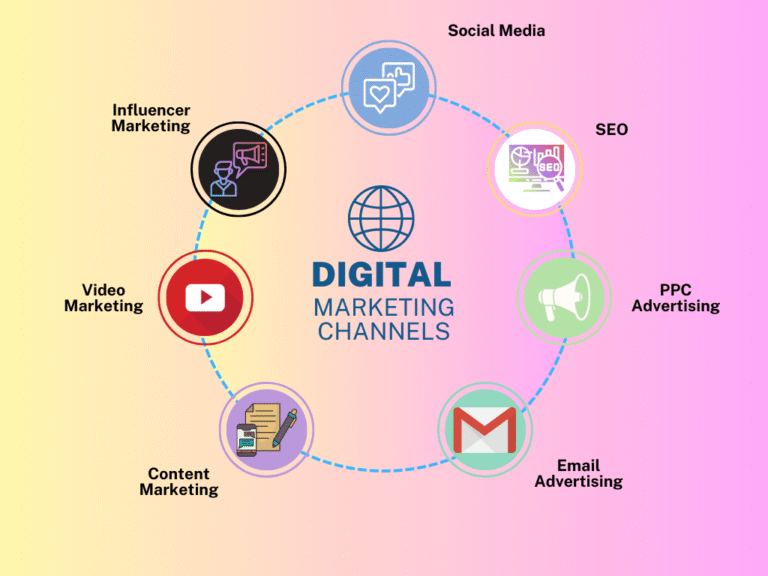
In our digital-first economy, businesses now reach and engage their customers in vastly different ways than the past. Traditional advertising, in newspapers, television, and radio, isn’t the only way to reach customers today. Consumers are spending larger amounts of time online (and digitally), searching for information, researching products, comparing products, gathering reviews, and engaging with brands via many devices and platforms. This shift is not only a change in technology—it is the emergence of digital marketing. Digital marketing is a necessary way for businesses to reach their customers in the right place and at the right time online.
Digital marketing channels are the foundation of digital marketing and, as the term suggests, they are various route ways online that can be used to communicate with a brand’s target customers. Digital marketing channels include search engines, social media, email, websites and mobile applications. These channels represent the true points of interaction a brand can have with customers as they take their journey from discovery to purchase and beyond. Understanding and making the most of the digital marketing channels are essential to any business that wants to stay relevant and compete in a crowded market.
Digital media channels provide not only reach, but also precise targeting, measurable results, interactivity, and a price point that is adaptable to any size or cost structure. Each channel has a different function addressing the stages of the customer journey while being designed for the diverse preferences and behaviors of individuals throughout their journey. For example, search provides options for demands being captured by customers who are searching for solutions, while social media facilitates brand-building and community.
Email can deliver messaging and nurture the relationship over time, while paid media can provide immediate reach to targeted audiences. The diversity and limitations of digital channels provide marketers the ability to develop integrated, omnichannel solutions that provide consistent experiences for customers. As technology improves and the expectations of customers increase, those businesses that utilize digital channels will not just engage prospects and customers, but will also foster loyalty and growth over the long-term.
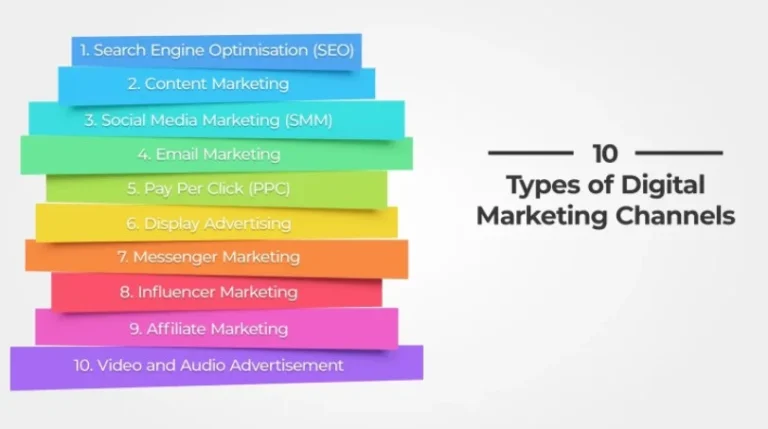
TYPES OF DIGITAL MARKETING CHANNELS
Over the years, marketers have developed and refined various digital marketing channels. Here are the most popular and effective types of digital marketing channels businesses use today:
1. SEARCH ENGINE IOTIMIZATION (SEO)
SEO is the process of optimizing a website to rank higher on search engine results pages (SERPs). This organic channel is crucial because most online experiences begin with a search query. SEO involves keyword research, content creation, technical improvements, and link building to improve visibility and attract qualified traffic to a website without paying for ads.
2. PAY-PER-CLICK ADVERTISING (PPC)
PPC is a paid channel where advertisers pay a fee each time their ad is clicked. Platforms like Google Ads and Bing Ads allow marketers to place their ads at the top of search results or on relevant websites. PPC delivers instant traffic and is highly measurable, making it ideal for businesses looking for quick results.
3. SOCIAL MEDIA MARKETING
Social media platforms like Facebook, Instagram, LinkedIn, Twitter, and TikTok are widely used to build brand awareness, engage audiences, and drive traffic. This channel can include organic posting, influencer marketing, and paid social ads. Each platform caters to different audience demographics, so marketers must choose wisely based on their target audience.
4. CONTENT MARKETING
Content marketing focuses on creating valuable and relevant content to attract and retain customers. Blogs, videos, infographics, whitepapers, and podcasts are examples of content delivered through various digital channels. This channel helps establish authority, educate customers, and nurture leads over time.
5. EMAIL MARKETING
Email remains one of the most cost-effective digital marketing channels. It allows businesses to build relationships, nurture leads, and promote products directly to customers’ inboxes. With the right segmentation and personalization, email marketing can deliver high ROI.
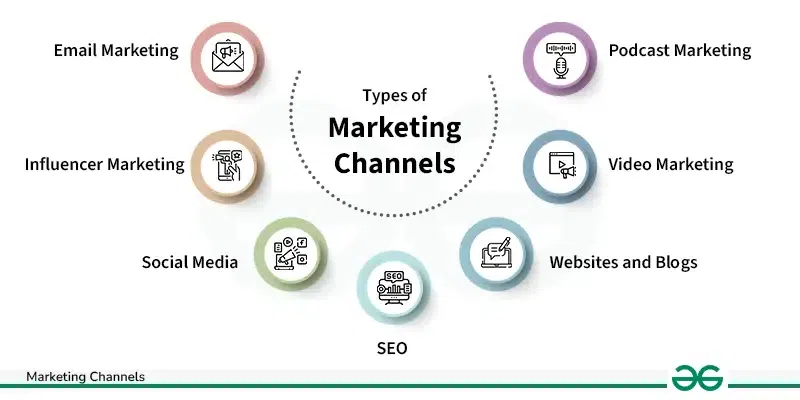
6. AFFILIATE MARKETING
Affiliate marketing involves partnering with affiliates (influencers, bloggers, or other businesses) who promote your products or services for a commission on sales generated. This performance-based channel can expand your reach and increase sales without upfront investment.]
7. VIDEO MARKETING
With platforms like YouTube and the rising popularity of short-form videos, video marketing has become an essential channel. Videos are highly engaging and can be used for tutorials, testimonials, product demonstrations, and storytelling.
8. MOBILE MARKETING
This channel targets users on smartphones and tablets through SMS campaigns, push notifications, in-app ads, and mobile-optimized websites. With the increasing use of mobile devices, this channel is critical for real-time engagement.
9. DISPLAY ADVERTISING
Display ads include banners, pop-ups, and video ads placed on websites and apps to capture audience attention. They are great for remarketing and increasing brand visibility across the web.
10. INFLUENCER MARKETING
Influencers with dedicated followers can promote products to their audience, providing credibility and widening reach. This is especially effective in niche markets and social media platforms.
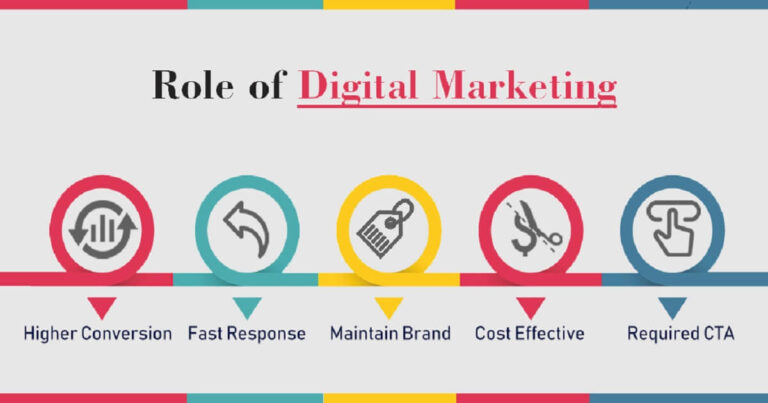
FUNCTIONS OF DIGITAL MARKETING CHANNELS
Digital marketing channels provide various functions that are essential to your business enterprise. Each channel serves one or many of the following functions:
1. AWARENESS
Various social media, display ads, and SEO marketing channels build awareness around your brand by reaching someone who has not heard of your products and/or services yet.
2. ENGAGEMENT
A digital marketing channel provides you with two-way communication by allowing you and your customers to communicate through comments, likes, shares, and personalized emails. Engagement builds trust and your relationship with a customer.
3. LEAD GENERATION
Channels including PPC, content marketing, and email marketing campaigns generate qualified leads by providing a useful item or a reason to get their contact information, often in exchange for this information.
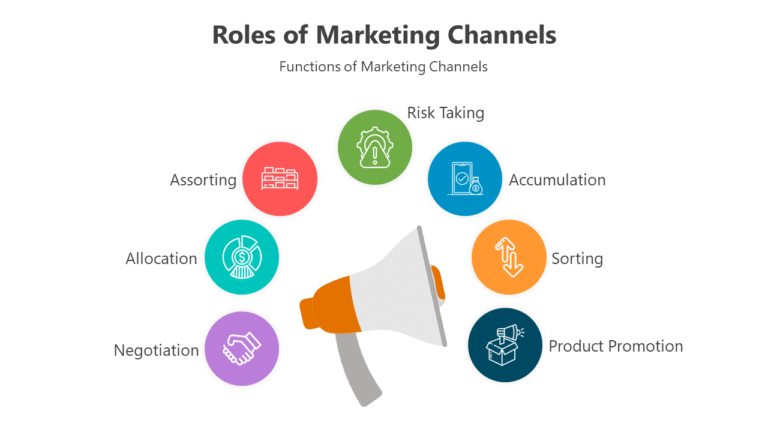
4. CONVERSIONS
Many digital channels are meant to convert, whether it’s a sale, signing up for a webinar, or downloading an ebook. Optimized landing pages, retargeting ads and customized emails can all convert users at higher rates.
5. CUSTOMER RETENTION
Email, loyalty programs and social media are a few ways businesses can connect with customers and build relationships to promote repeat business and referrals.
6. ANALYTICS AND OPTIMIZATION
Digital channels allow marketers to gather and analyze data in real time on campaign performance, customer behavior and ROI. Optimizing strategies and improving results can be accomplished in an on-going manner.
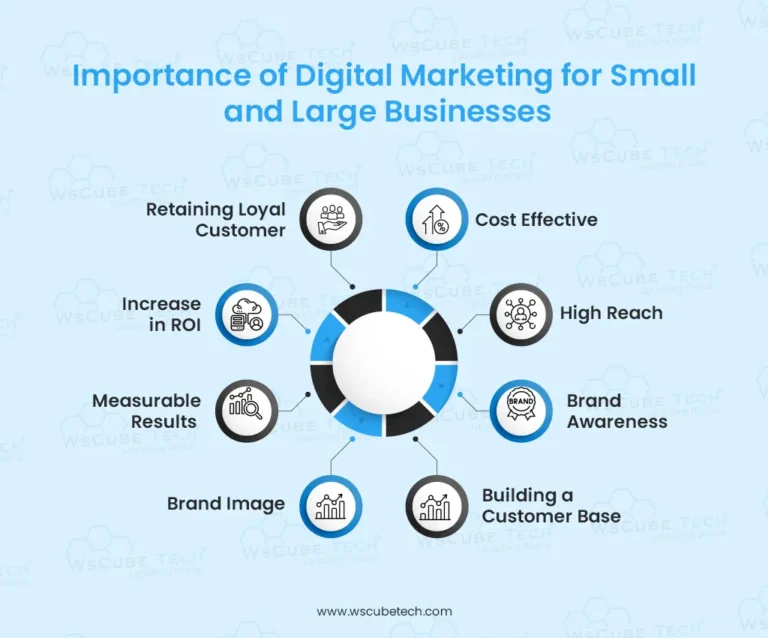
IMPORTANCE OF DIGITAL MARKETING CHANNELS
In today’s competitive business world, digital marketing channels are more important than ever. Here are three reasons they are fundamental to business expansion:
1. GREATER REACH
Digital marketing channels allow businesses to engage with customers across the globe at a fraction of the cost when compared to traditional marketing. Digital channels break down geographical barriers and allow even small businesses to compete on a larger scale.
2. AFFORDABLE
Many digital marketing channels (e.g. SEO, social media, etc.) have proven to provide very high returns for a relatively low investment. Businesses can choose the channels that fit within their budgets without sacrificing the opportunity to publish results that can be measured.
3. SPECIFITY
Digital marketing channels have advanced targeting features that enable businesses to reach customers based on demographics, interests, behavior, and other criteria that make them specific. This high levels of specificity only improves the efficiency of marketing campaigns.
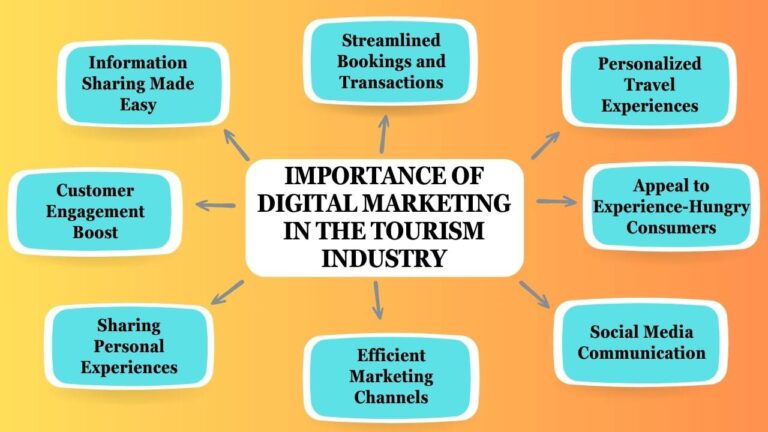
4. REAL-TIME ENGAGEMENT
Digital channels allow for engagement and feedback in real-time. Unlike traditional media, businesses are able to reply to customer inquiries, mitigate complaints, and foster better relationships — all in real-time.
5. MEASURABLE RESULTS
Digital marketing channels also provide strong analytics tools to assist in measuring campaign performance, ROI, and customer journeys. This data-oriented process allows businesses to make informed decisions to hone strategies, allowing for greater performance.
6. PERSONALIZATION
Digital channels simplify personalized messaging and offers based on customer interest and behavior. Personalization is a critical factor to improve overall customer experience that leads to increased loyalty.
7. COMPETITIVE ADVANTAGE
Businesses that are leveraging relevant digital channels will tend to stay ahead of competitors who are only using traditional methods. In today’s world, a significant digital presence is now the baseline level for credibility and relevance in the marketplace.
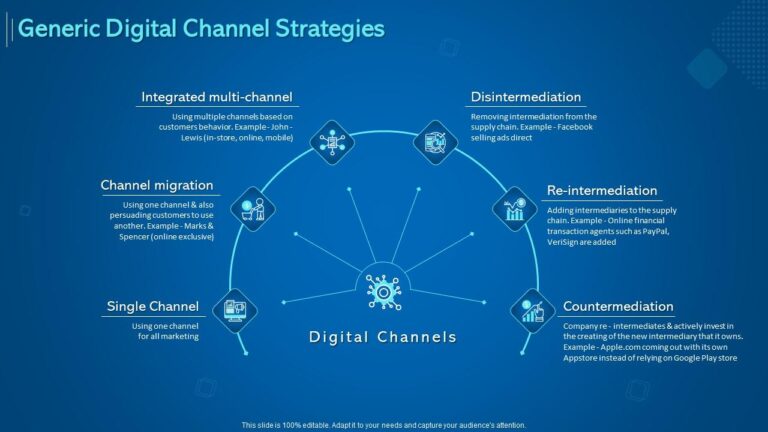
STRATEGIES OF DIGITAL MARKETING CHANNELS
To leverage digital marketing channels effectively, businesses need well-thought-out strategies. Here are some key strategies to make the most of these channels:
1. DEFINE YOUR OBJECTIVES
Start by setting clear marketing goals—whether it’s brand awareness, lead generation, sales, or customer retention. Your objectives will guide your choice of channels and tactics.
2. UNDERSTAND YOUR AUDIENCE
Research your target audience to understand their preferences, behavior, and the channels they use. Create buyer personas to tailor your message and channel selection accordingly.
3. CHOOSE THE RIGHT CHANNELS
Not all channels suit every business. Select the ones that align with your goals, audience, and budget. For example, B2B companies may benefit more from LinkedIn, while B2C brands might thrive on Instagram and TikTok.
4. CREATE HIHJ QUALITY CONTENT
Content is the foundation of most digital channels. Develop engaging, relevant, and valuable content that resonates with your audience across platforms—blogs, videos, infographics, and more.
5. OPTIMIZE FOR MOBILE
Ensure all your digital assets—websites, emails, ads—are mobile-friendly. With the growing number of mobile users, this is essential for user experience and SEO.
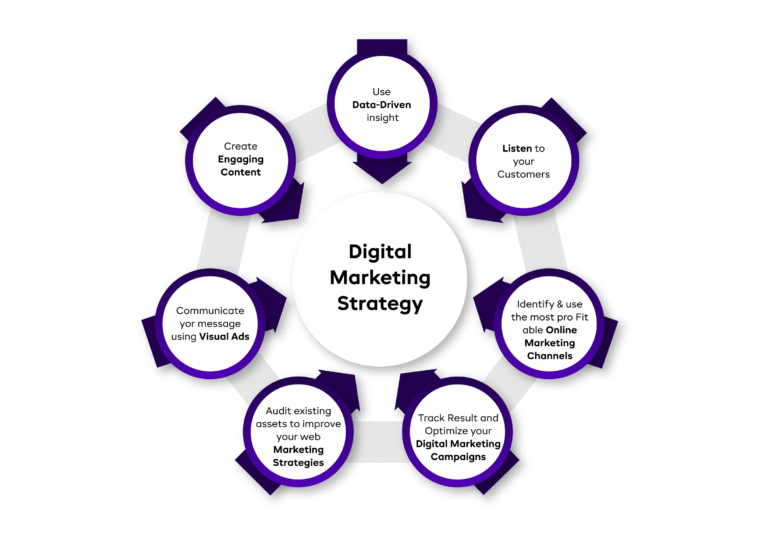
6. UTILIZE DATA AND ANALYTICS
Use data, including performance metrics such as traffic, conversions, and engagement, with the use of analytics tools. Look into the numbers to see what is working, then revise your strategy as necessary.
7. INTEGRATE ALL CHANNELS
\If you want to have the biggest impact, bring your digital channels together to create the best customer journey. For example, your social media efforts can promote a blog to capture leads through email and retarget those visitors with display ads.
8. ALLOCATE FOR PAID EFFORTS
While organic is just as important, paid efforts provide greater reach and allow you to produce results more quickly. As needed, budget for PPC, social ads, or influencer campaigns.
9. THINK SEO
Having a solid SEO strategy for your website and content ensures your website and content can be found in searches, bringing organic traffic for the long haul.
10. BUILD RELATIONSHIPS
Engage with your customers and build loyalty through channels such as social and email. Respond promptly to feedback and encourage their suggestions while rewarding repeat customers.
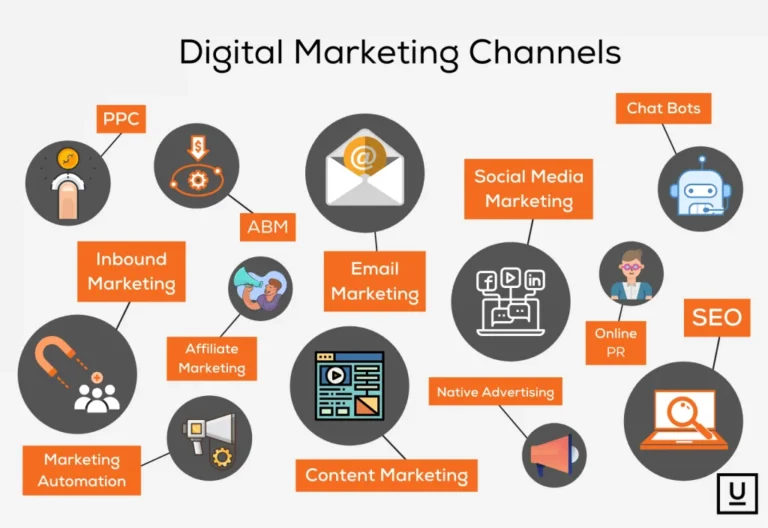
BENEFITS OF DIGITAL MARKETING CHANNELS
Digital marketing channels provide broad advantages for businesses that make them essential in today’s fast-paced, interconnected world. One huge advantage is their potential reach globally and the flexibility of hyper-local or niche targeting. Businesses are able to reach potential customers by demographic, geography, preferences and interests through channels like search engine marketing, social media platforms, and email campaigns far better than broad, one-way mass reached methods.
Also, overall cost of marketing channels is usually low, allowing access for most small businesses who are budgeting tightly. Digital is easier to afford that print or television and offers means easier measurements to analyze digital campaign tactics, analytics are frequently provided and are visually appealing to marketers who can understand data on what is effective and ineffective. Also, digital channels facilitate two-way communication allowing businesses to communicate directly with their customers. Businesses can also build relationships through engagement, feedback, and personalization. This eventually leads to improving customer satisfaction and brand loyalty over time.
Another significant advantage of digital marketing channels is being able to measure and track results with great precision. Businesses can use tools like Google Analytics, social media insights, or CRM systems to observe how many people see a campaign, engage with the content, visit their website, and finally keep track of conversions from a digital campaign. The level of visibility available through digital marketing channels allows for more effective resource building so that when it comes to spending marketing expenditures, all dollars work to maximize return on investment (ROI).
Digital marketing channels also provide flexibility and scale; if you need to change a campaign because of performance, a digital campaign can be modified in real-time, paused altogether, or scaled up. Digital marketing channels also help personalize messaging and offers to individual customers based on behavior, preferences and purchase histories, which creates more relevance and more engagement opportunities and ultimately better conversions and revenues for the business. In conclusion, digital marketing channels enabled marketers to establish highly targeted, data driven, and customer focused marketing initiatives that drive business growth with meaningful connections to audiences.
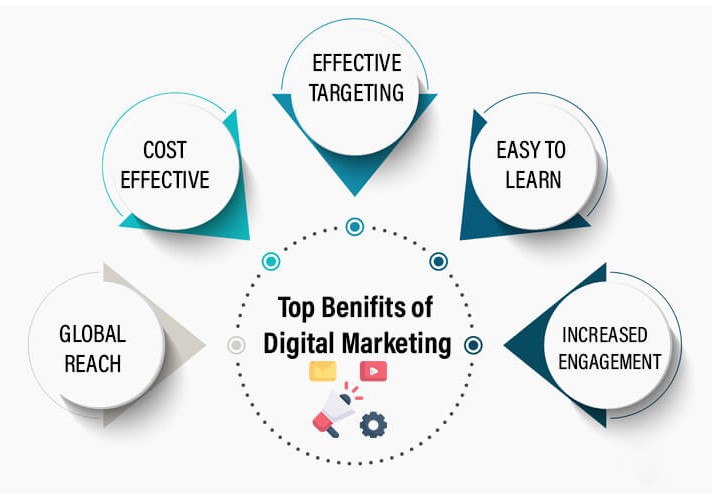
Digital marketing channels are the lifelines of modern businesses. They provide the platforms to communicate, connect, and convert audiences in ways that were unimaginable just a few decades ago. Understanding the types, functions, importance, and strategies of these channels is essential for any business looking to thrive in the digital era. By carefully selecting and optimizing your digital channels, you can reach the right audience, deliver value, and achieve your business objectives effectively. Whether you’re a startup, a small business, or an established brand, mastering digital marketing channels will ensure you stay competitive and relevant in an ever-evolving marketplace.
To conclude, digital marketing channels have changed the way businesses interact with their customers, allowing for reach, accuracy, and engagement previously unimaginable. From organic channels SEO and content marketing to paid channels such as PPC and display advertising, each channel works for different parts of the customer journey. The ability to integrate channels for a seamless multi-touchpoint experience that builds awareness, develops relationships, and converts leads to customers is powerful.
Digital channels enable marketers to message within audience segments, optimize campaign performance in real-time, and improve on previous campaigns and performance results. This purpose-built and digitally native environment where customer/consumer behavior is increasingly biasing towards digital methods, clearly highlights the need for businesses of all sizes to be using these channels not only as a marketing tactic but as part of their overall strategy for growth.
As we anticipate the future of digital marketing, it is clear that we will continue to witness changes in the marketing channels available based on emerging technologies, evolving consumer habits, and new platforms. The most agile, data-backed, and customer-centered businesses will be best positioned to take advantage of these changes to remain competitive and agile.
Mix the right channels in the right configuration with the right content, and the right level of engagement, businesses can build trust and loyalty among their customers and create systems for sustained growth. Mastering digital marketing channels is not a choice but an essential value for success in a hyper-connected, fast-changing world. Companies with the best understanding of, and the right investment of time and resources in, mastering, optimizing, and innovating on multiple marketing channels, have the recipes for their greatest potential for success.
